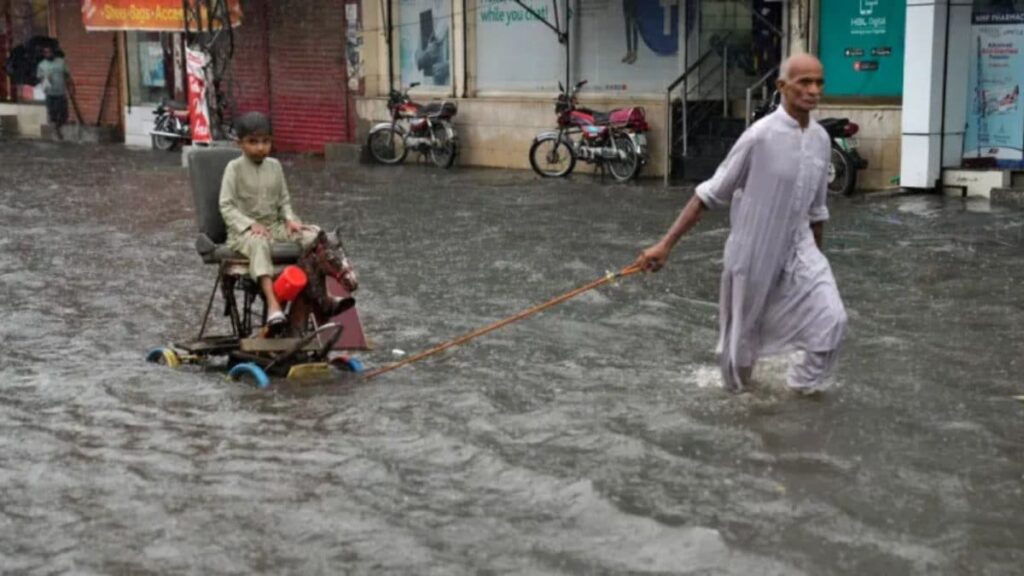
Last Updated:
The United Nations has raised concerns about potential glacier lake outburst floods in the mountainous regions of Khyber Pakhtunkhwa and Gilgit-Baltistan.

Monsoon rains in Pakistan | Image: X
More than 200 people, including nearly 100 children, have died since the onset of the monsoon season in late June, according to Pakistan’s National Disaster Management Authority (NDMA).
Punjab province recorded the highest number of fatalities at 123, followed by 40 in Khyber Pakhtunkhwa, 21 in Sindh, 16 in Balochistan, and one each in Islamabad and Pakistan-occupied Jammu and Kashmir, reported Geo TV.
The deaths were attributed to a range of causes, including collapsing buildings (118), flash floods (30), as well as incidents involving drowning, lightning, electrocution, and landslides. Over 560 people have been injured, among them 182 children.
Heavy rainfall in Rawalpindi led to flash floods that inundated homes, streets, and marketplaces. In some areas, water levels rose to rooftop height, forcing residents to evacuate and abandon their belongings.
In Faisalabad, 11 people died and 60 were injured in 33 reported incidents within two days, largely due to structural collapses.
In Punjab, severe rainfall and landslides damaged infrastructure extensively. In Chakwal, over 32 roads were washed away after receiving more than 450 mm of rainfall.
Disruptions in communication and power supply continue in several affected regions.
The United Nations has raised concerns about potential glacier lake outburst floods in the mountainous regions of Khyber Pakhtunkhwa and Gilgit-Baltistan.
A UN News report described the current flooding as another indication of Pakistan’s vulnerability to climate-related disasters.
Pakistan regularly experiences monsoon-related flooding from June to September, leading to fatalities, infrastructure losses, and displacement, particularly in areas with poor drainage and high population density.
view comments
- First Published:




